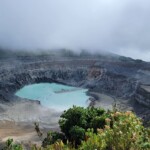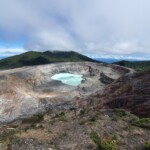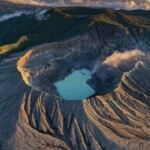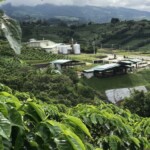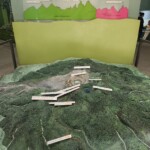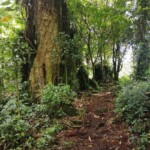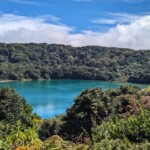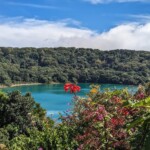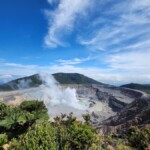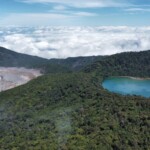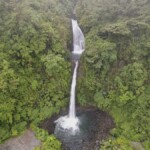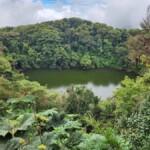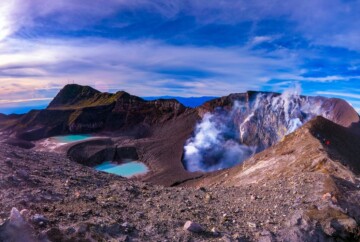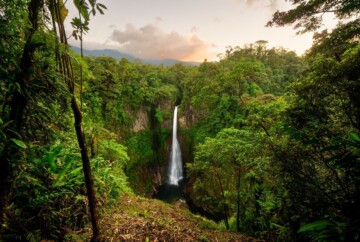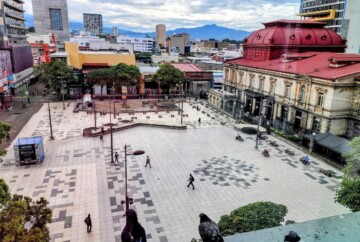For many travelers, Poas Volcano National Park is the perfect introduction to Costa Rica’s volcanic landscape. Its close proximity to San José, the capital of the country, makes it an easy day trip, offering a chance to explore one of the country’s most unique and breathtaking environments.
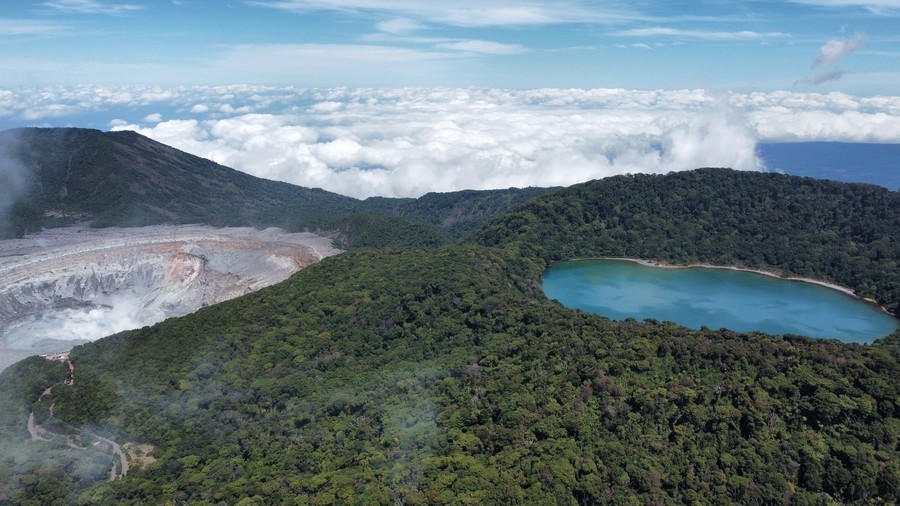
Guide to visiting the Poás Volcano in Costa Rica
Standing at 8,850 feet tall, Poás is one of the most active volcanoes in Costa Rica, making it a truly thrilling place to visit. The volcano has two craters, each home to beautiful lagoons, but here’s a heads-up: they’re often covered by thick clouds that can obscure the view. If you’re fortunate enough to visit on a clear day, though, you’re in for an unforgettable experience—one of those picture-perfect moments that will stay with you forever.
Besides being one of the must-see attractions in Costa Rica, Poas is also one of the easiest to explore. The trails to the viewpoints are fairly simple, making it accessible for most visitors. In this guide, I’ll share everything you need to know about hiking to the Poas Volcano, from what to expect to tips for making the most of your adventure.
Poás Volcano eruption and current status
As I mentioned earlier, the Poas Volcano is one of the most active volcanoes in Costa Rica, and its eruptions are nothing short of impressive. Over the centuries, it has erupted around 40 times, but the most famous one occurred in 1910 when the ash cloud reached a staggering 25,250 feet! You can imagine the sound and power that must have come with it.
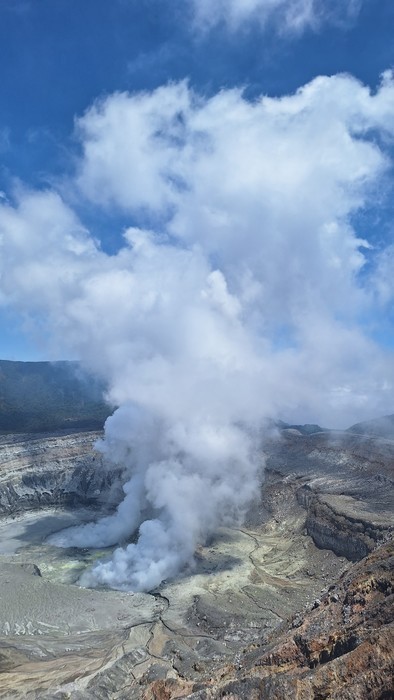
Poás Volcano eruption and current status
More recently, in 2017, the volcano was particularly active again, causing the park to close for safety reasons. It didn’t reopen until 2019 after things had calmed down.
This year, Poás has been pretty lively once more, leading to several temporary park closures. If you’re planning to visit, it’s a good idea to check the current status of the trails ahead of time to ensure you won’t run into any surprises.
Safety measures for visiting the active Poás Volcano
Since Poas is an active volcano, there are a few safety measures in place to ensure visitors can enjoy the experience without any worries. First off, the park has a 24-hour observatory that monitors the Poás Volcano’s activity, keeping a close eye on the gasses and emissions to make sure it’s safe for visitors to be nearby.
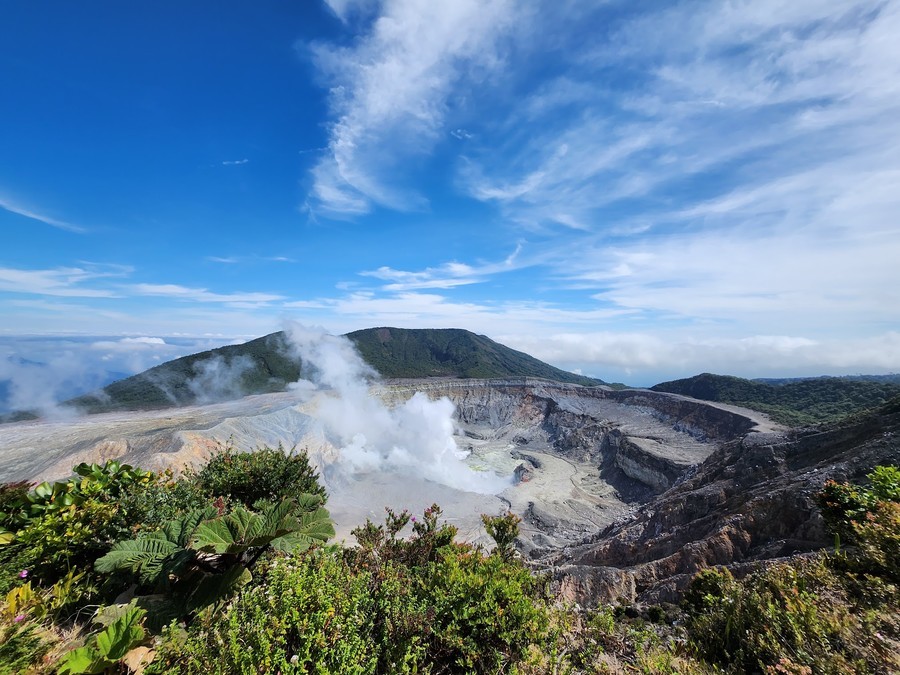
Safety measures for visiting the active Poás Volcano
When you enter the park, you’ll be given a helmet, which is mandatory to wear during your visit. This is due to the risk of acid rain, as well as the possibility of volcanic ash or sediment being expelled from the crater. These precautions are there to keep you safe; be sure to follow the rules so you can safely enjoy the adventure!
Best things to do in Poas Volcano National Park
Poás Volcano National Park covers about 14,800 acres and is home to four distinct ecosystems, giving it a rich variety of plant and animal life.
The park’s lush vegetation thrives in the volcanic soil, creating the perfect environment for growing some of the world’s best coffee, and you’ll find a number of plantations nearby that you can visit. Birdwatchers will also be in for a treat, as the park is home to many species of Costa Rican birds, and there are plenty of top-rated tours in Costa Rica available for observing them up close.
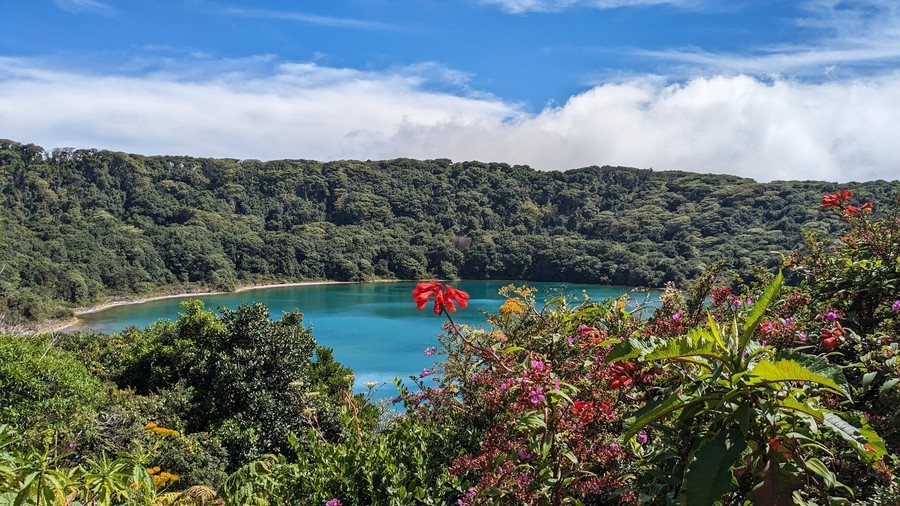
Best things to do in Poas Volcano National Park
The park features three well-marked trails that weave through the forested areas, taking about two hours to walk in total. However, before you go, make sure to check if the trails are open. If they’re closed, you’ll only be able to visit the main crater viewpoint and can stay there for a maximum of 20 minutes.
To make the most of your visit, it’s worth planning ahead. Keep an eye on the weather at the crater, and if it’s too cloudy when you arrive, take a walk along the trails and come back to check if the visibility improves.
Now, let’s dive into what else you can see at Poas Volcano National Park.
1. Main crater
Reaching the main crater is super easy since the trail starts right at the Visitor Center. It’s less than half a mile away, and it’s one of the most important spots in Poás Volcano National Park because it takes you directly to a viewing point where you can see one of the biggest volcanic lagoons in the world.
The crater itself is massive—1,000 feet deep and about 3,300 feet across. What’s really cool is that scientists estimate the ash and lava deposits around the crater rim are over 7,500 years old, which makes the whole scene even more impressive. Plus, the lagoon inside the crater has a stunning turquoise color that changes depending on the season and mineral concentration, so the view is always different.
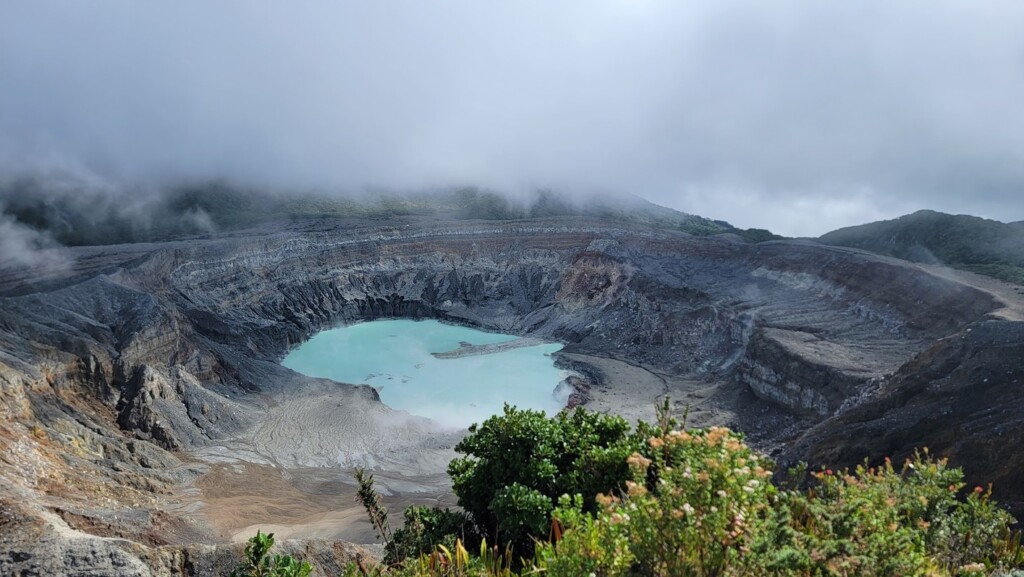
1. Main crater
One interesting fact is that this lagoon is one of the 30 most acidic bodies of water on Earth, so its contents are highly toxic. The temperatures at Poas Volcano Lagoon range from 86°F to 122°F. Because of this, there are emergency shelters nearby, just in case the volcano has an unexpected outburst. And if you look closely, you can still see lava marks on the ground from its most recent eruption—I cannot describe how amazing it is.
On certain days, you might spot fumaroles rising from the crater caused by rainwater filtering through the hot rocks. Sometimes, pressure can build up, launching debris into the air, which is why helmets are mandatory. You’ll also notice a strong sulfur smell as you walk along the trails—it’s all part of this unique Earth experience.
Keep in mind, though, you can only stay at the viewing point for 20 minutes, so make sure to snap a few photos and then put your camera down to really take in the moment.
2. Von Frantzius Cone
The Von Frantzius Cone is the name of another crater at Poás Volcano, located about 3,000 feet north of the main crater. Unlike the main crater, this one is extinct and has a horseshoe shape, which formed after part of it was destroyed in a past eruption. If you look closely, you’ll see old lava flows all over its sides.
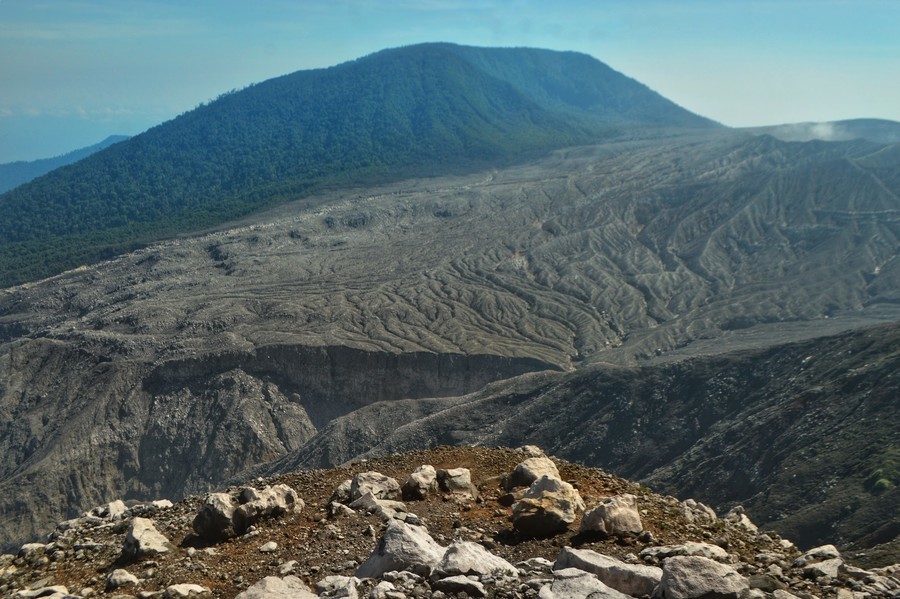
2. Von Frantzius Cone
However, this area is only accessible to professional climbers since the terrain is incredibly steep and requires a lot of physical endurance.
3. Lake Botos
The trail to Lake Botos offers a peaceful nature walk and some of the most beautiful scenery around the Poás Volcano. The path is breathtaking and winds through a dense forest filled with a variety of plants and trees that have adapted with thick, strong leaves to withstand the harsh radiation and acid rain common in a volcanic environment.
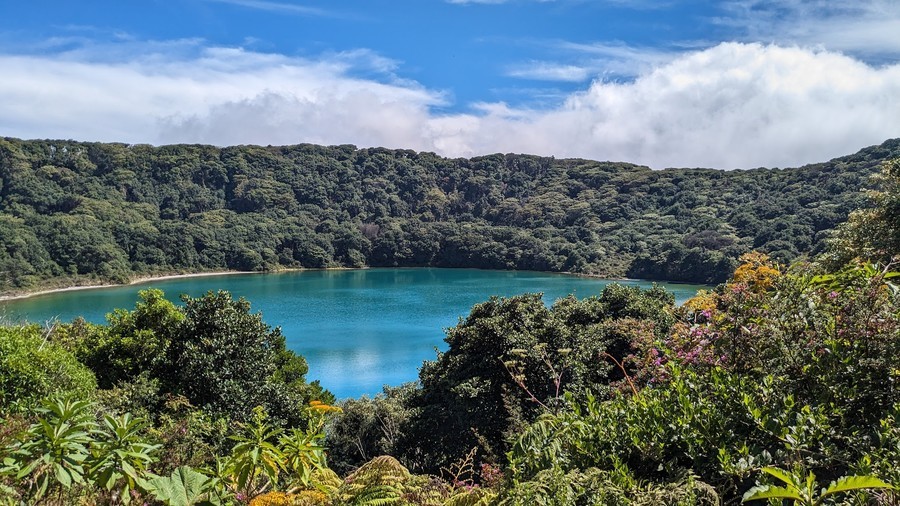
3. Lake Botos
Lake Botos is nestled inside an ancient 45-foot-deep crater, and its greenish color adds to its charm. To reach the lagoon, you’ll follow a 0.5-mile-long path that branches off from the main crater, which will take you a little over half an hour round-trip.
4. Escalonia Trail, the best place to see the fauna of the Poás Volcano
The Escalonia Trail is perfect if you want to dive deeper into the lush cloud forest. Stretching about 1.8 miles, this trail winds through thick vegetation, making it a haven for birdwatching—there are around 79 different species to spot! You might also catch a glimpse of other native Costa Rican wildlife like armadillos, coyotes, and raccoons.
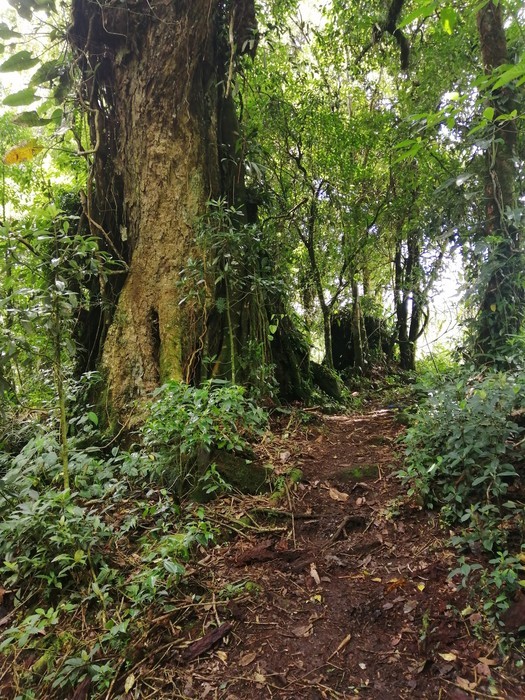
4. Escalonia Trail, the best place to see the fauna of the Poás Volcano
For the best experience, I recommend hiring a guide. They’ll help you spot different animals and plants you might miss on your own and share insights about the area’s rich biodiversity. Poas Volcano National Park is home to many unique species, from vibrant flowers to the famous quetzal bird. And since the trail can be uneven and slippery, it’s always wise to go with someone who knows the path well.
5. Interactive museum
Your adventure at the Poás Volcano actually kicks off here! Once you’ve put on your helmet, you’ll step into the interpretive center, where you’ll find a wealth of information to get you oriented. You’ll also watch a short documentary that dives into the park’s history and the volcano’s geology, with some striking visuals of past eruptions.
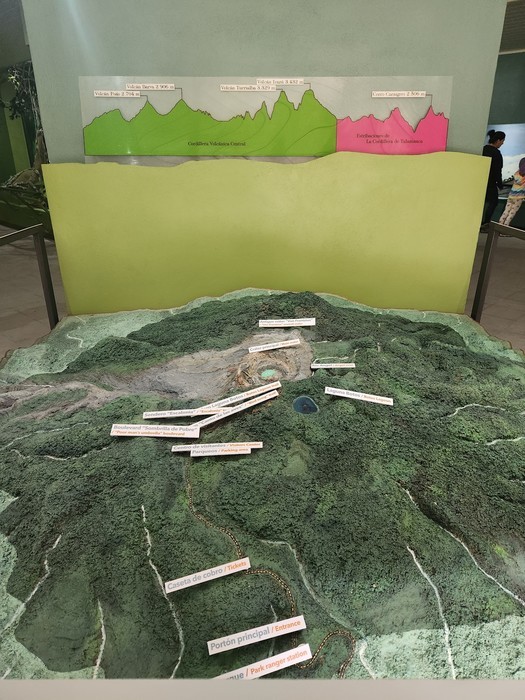
5. Interactive museum
Inside, you’ll also find restrooms, a small café, and a souvenir shop. It’s a great spot to recharge after exploring the park.
Best things to do near the Poás Volcano
Besides the stunning volcano, there are plenty of other attractions nearby that you can explore to make the most of your trip. Whether you’ve still got energy or are just eager to keep discovering more of Costa Rica’s beauty, here are some ideas to help you continue enjoying the country’s treasures.
La Paz Waterfall
The La Paz Waterfall is just a short 35-minute drive from Poas National Park, so it’s super easy to include it in your day. What’s great about this impressive Costa Rican waterfall is that you can actually see the 115-foot-high cascade right from the road. So, even if you’re pressed for time, you can make a quick stop to admire it without any hassle or extra cost, which is perfect for those traveling on a budget.

La Paz Waterfall
If you’ve got some extra time and want a fuller experience, I suggest heading into the nearby ecological park. Here, you’ll find four more waterfalls and the world’s largest butterfly garden! There are also plenty of nature trails where you can enjoy a peaceful walk and immerse yourself in the surrounding beauty. Some of the viewpoints offer breathtaking views, making it a great family-friendly activity, though the entrance fee is $52.
If you don’t have a rental car in Costa Rica, consider signing up for this tour. It’s one of the best excursions from San José and includes both the Poás Volcano and La Paz Waterfall, plus a visit to a coffee farm—which I’ll dive into next.
Starbucks and Doka coffee farms
Located on the slopes of the Poás Volcano, you’ll find numerous coffee farms where you can dive into one of the key ingredients in traditional Costa Rican cuisine—coffee!
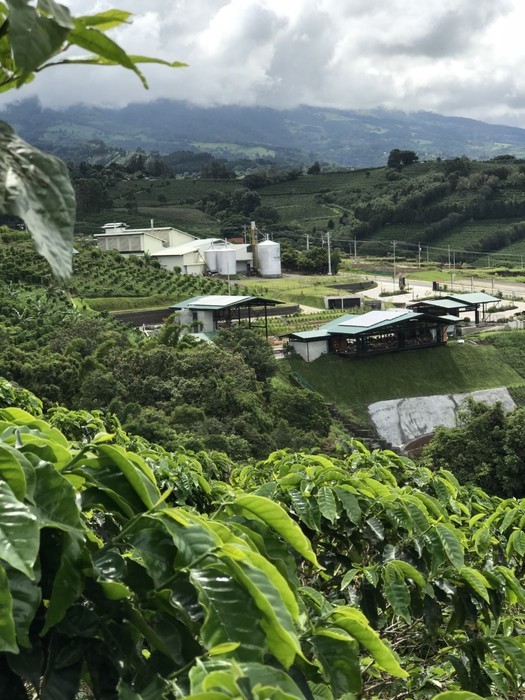
Starbucks and Doka coffee farms
The most famous of these is the Hacienda Alsacia Starbucks farm, located just 10 miles from the entrance to Poas Volcano National Park. It offers one of the most popular coffee tours in Costa Rica, so I recommend booking in advance. Alternatively, you can book this excursion that I mentioned earlier, which includes this farm, along with the Poas Volcano and La Paz Waterfall. It’s a more budget-friendly option since the coffee tour alone costs $30.
Another option is the Doka Coffee Farm, located 13 miles from the Poas Volcano. The tour here costs $25, and you’ll get an in-depth look at the coffee-growing, harvesting, and roasting process, plus the chance to taste some delicious local coffee. If Doka Farm piques your interest, make sure to join this exciting tour.
Tesoro Escondido Waterfall
If you were impressed by La Paz Waterfall, wait until you see the Tesoro Escondido (“Hidden Treasure”) Waterfall. It’s tucked away in the less-traveled area of Bajos del Toro, so it’s perfect for those looking to escape the crowds and enjoy a quieter experience. Plus, this area is packed with other smaller waterfalls, so you can spend the day exploring hidden gems.
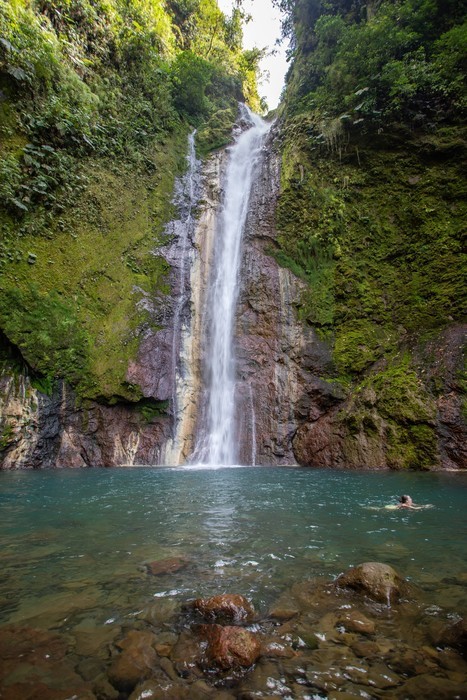
Tesoro Escondido Waterfall
The trail to the waterfall is about 2 miles round-trip, making it an easy hike that just about anyone can handle. At the end of the path, you’ll find a viewpoint where you can admire the stunning waterfall. If you’re up for it, you can also hike down to a refreshing pool at the base of the falls for a swim. The entrance fee is $14, which is well worth the experience.
Barva Volcano
Standing at 9,500 feet, Barva Volcano is located within the Braulio Carrillo National Park, one of the most iconic national parks in Costa Rica. Despite being one of the largest parks in the country, it doesn’t get as many visitors as other large national parks. That said, Braulio Carrillo offers some truly breathtaking landscapes that definitely surprised me.
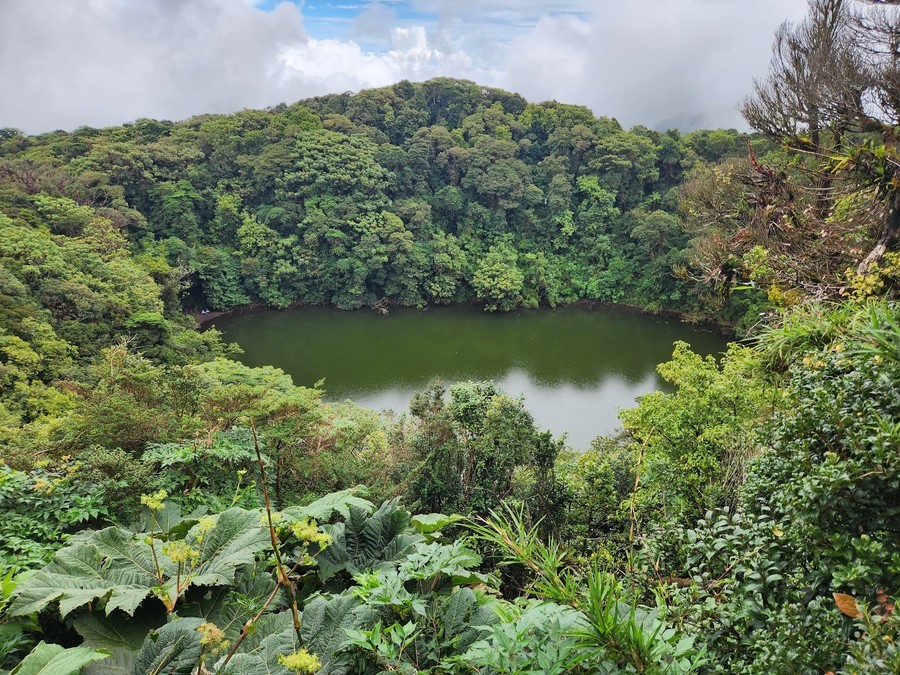
Barva Volcano
The road to get there isn’t in the best condition, but it’s a short distance and absolutely worth the effort. The trail up to the crater is about 1.8 miles long and takes around 2 hours to complete. Once you reach the top, you’ll be treated to incredible views, with two extinct craters and three vibrant green lagoons that create a striking contrast.
If you’re feeling adventurous, you can continue along the trail to Laguna Copey. We were pretty tired by that point, so we didn’t make it, but if you do, let me know in the comments what you think! We heard it’s common to spot several species of Costa Rican monkeys in this forest, such as white-faced and howler monkeys, so keep your camera handy for some wildlife shots.
Poás Volcano hours and ticket prices
Poas Volcano’s opening hours are from 8:00 a.m. to 4:00 p.m. every day of the year. But here’s a heads-up: the last entry is at 2:00 p.m., so it’s a good idea to arrive early to make the most of your visit.
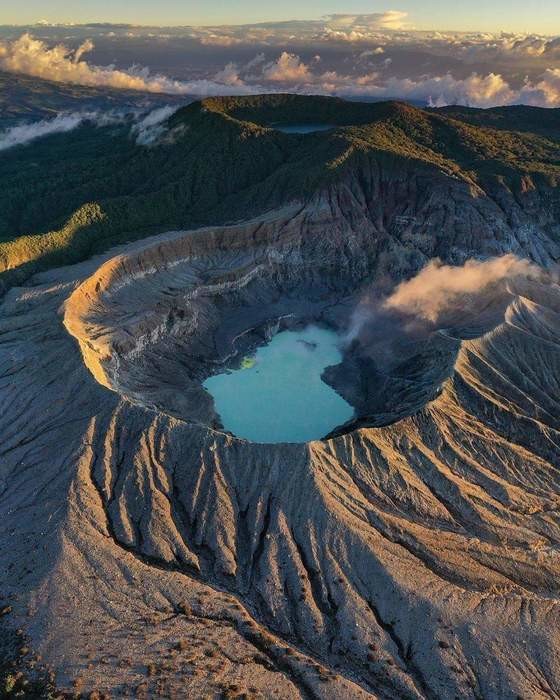
Poás Volcano hours and ticket prices
The entrance fee to Poás Volcano is $15 for foreigners, and you can only buy them through the SINAC website. You’ll need to register on the site first, and once that’s done, you can select your entry time. This part is key because you won’t be able to get in outside of the time you’ve chosen.
If you’re driving, parking costs ¢2000 ($2.85 USD), and you can pay for that directly at the ticket office at Poas Volcano National Park.
How to get to the Poás Volcano in Costa Rica
If you’re not sure about the exact location of the Poas Volcano, don’t worry! It’s very easy to reach by car from San José, which is just 30 miles away. But be prepared—traffic can get pretty heavy, so the drive usually takes around an hour and a half. The road gets a bit steep toward the end, so I’d only recommend driving if you’re comfortable with those kinds of conditions.
If renting a car in Costa Rica isn’t part of your plan, you can take a bus. However, buses leave only from Alajuela, a town 11 miles from San José, so you’ll need to get to Alajuela first. Once there, you can hop on the bus to Poás Volcano National Park.
It’s not the most straightforward option, but if you go this route, buses leave at 9:00 a.m. and return at 12:30 p.m., so you won’t have much time at the park. However, you can stay overnight at one of the hotels near the Poas Volcano, which allows you to explore the area at a more relaxed pace.
Poás Volcano tours
One of the easiest and most convenient ways to visit Poas Volcano National Park is by joining a guided tour. It’s perfect if you’re short on time or just don’t feel like dealing with all the planning.
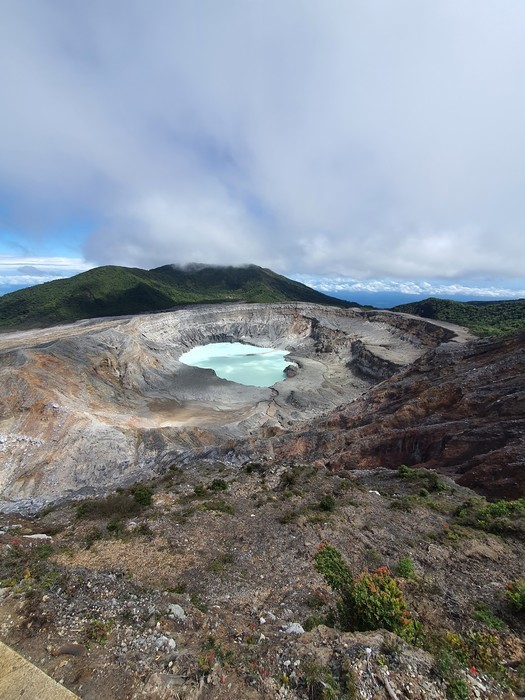
Poás Volcano tours
This excursion departs from San José and includes a stop in Alajuela, one of the most beautiful cities in Costa Rica. You’ll get to see its main attractions and learn a bit of history. Plus, the tour includes a local breakfast, giving you a nice energy boost before your adventure up to the Poás Volcano. You’ll be back in San José around midday, which will leave you plenty of time to explore the city or maybe join another tour that catches your eye.
But if you’ve got a full day available, I highly recommend the tour we did, which covers the Poas Volcano, La Paz Waterfall, and a visit to a coffee farm. It’s a fantastic way to maximize your day and see everything in one go, without having to return to the area later.
Poás Volcano map
Lastly, here’s a handy map of Costa Rica to help you plan your trip to Poas Volcano National Park.
FAQs – Poás Volcano National Park
While you already have most of the key details about visiting Poas Volcano National Park in Costa Rica, here are some answers to the most common questions visitors have:

